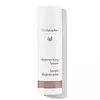What's inside
What's inside
 Key Ingredients
Key Ingredients

No key ingredients
 Benefits
Benefits

 Concerns
Concerns

 Ingredients Side-by-side
Ingredients Side-by-side

Water
Skin ConditioningDi-C12-13 Alkyl Malate
EmollientDicaprylyl Ether
EmollientPolymethyl Methacrylate
Tapioca Starch
Glycolic Acid
BufferingSodium Hydroxide
BufferingDiglycerin
HumectantGlycerin
HumectantMalic Acid
BufferingSteareth-2
EmulsifyingSteareth-21
CleansingLactic Acid
BufferingPentaerythrityl Distearate
EmulsifyingButylene Glycol
HumectantAcrylates/C10-30 Alkyl Acrylate Crosspolymer
Emulsion StabilisingJojoba Esters
EmollientDimethicone
EmollientGlyceryl Stearate
EmollientParfum
MaskingPEG-100 Stearate
Propanediol
SolventTocopheryl Acetate
AntioxidantPolyglycerin-3
HumectantPiroctone Olamine
PreservativeXanthan Gum
EmulsifyingPhytosphingosine
Skin ConditioningLens Esculenta Fruit Extract
Skin ConditioningPolymethylsilsesquioxane
Salicylic Acid
MaskingZinc Lactate
Asiaticoside
AntioxidantAcacia Decurrens Flower Cera
EmollientHelianthus Annuus Seed Wax
Skin ConditioningPhenoxyethanol
PreservativeGlycyrrhiza Inflata Root Extract
Skin ConditioningEthylhexylglycerin
Skin ConditioningRhamnose
HumectantGlucose
HumectantGlucuronic Acid
BufferingWater, Di-C12-13 Alkyl Malate, Dicaprylyl Ether, Polymethyl Methacrylate, Tapioca Starch, Glycolic Acid, Sodium Hydroxide, Diglycerin, Glycerin, Malic Acid, Steareth-2, Steareth-21, Lactic Acid, Pentaerythrityl Distearate, Butylene Glycol, Acrylates/C10-30 Alkyl Acrylate Crosspolymer, Jojoba Esters, Dimethicone, Glyceryl Stearate, Parfum, PEG-100 Stearate, Propanediol, Tocopheryl Acetate, Polyglycerin-3, Piroctone Olamine, Xanthan Gum, Phytosphingosine, Lens Esculenta Fruit Extract, Polymethylsilsesquioxane, Salicylic Acid, Zinc Lactate, Asiaticoside, Acacia Decurrens Flower Cera, Helianthus Annuus Seed Wax, Phenoxyethanol, Glycyrrhiza Inflata Root Extract, Ethylhexylglycerin, Rhamnose, Glucose, Glucuronic Acid
Water
Skin ConditioningAlcohol
AntimicrobialPyrus Cydonia Seed Extract
MaskingGlycerin
HumectantTrifolium Pratense Extract
Skin ConditioningAlgin
MaskingKalanchoe Daigremontiana Leaf Extract
HumectantHoney
HumectantParfum
MaskingLimonene
PerfumingGeraniol
PerfumingCitronellol
PerfumingLinalool
PerfumingFarnesol
PerfumingBenzyl Benzoate
AntimicrobialEugenol
PerfumingCitral
PerfumingSucrose Laurate
EmollientCyamopsis Tetragonoloba Gum
Emulsion Stabilising
 Reviews
Reviews

Ingredients Explained
These ingredients are found in both products.
Ingredients higher up in an ingredient list are typically present in a larger amount.
Glycerin is already naturally found in your skin. It helps moisturize and protect your skin.
A study from 2016 found glycerin to be more effective as a humectant than AHAs and hyaluronic acid.
As a humectant, it helps the skin stay hydrated by pulling moisture to your skin. The low molecular weight of glycerin allows it to pull moisture into the deeper layers of your skin.
Hydrated skin improves your skin barrier; Your skin barrier helps protect against irritants and bacteria.
Glycerin has also been found to have antimicrobial and antiviral properties. Due to these properties, glycerin is often used in wound and burn treatments.
In cosmetics, glycerin is usually derived from plants such as soybean or palm. However, it can also be sourced from animals, such as tallow or animal fat.
This ingredient is organic, colorless, odorless, and non-toxic.
Glycerin is the name for this ingredient in American English. British English uses Glycerol/Glycerine.
Learn more about GlycerinParfum is a catch-all term for an ingredient or more that is used to give a scent to products.
Also called "fragrance", this ingredient can be a blend of hundreds of chemicals or plant oils. This means every product with "fragrance" or "parfum" in the ingredients list is a different mixture.
For instance, Habanolide is a proprietary trade name for a specific aroma chemical. When used as a fragrance ingredient in cosmetics, most aroma chemicals fall under the broad labeling category of “FRAGRANCE” or “PARFUM” according to EU and US regulations.
The term 'parfum' or 'fragrance' is not regulated in many countries. In many cases, it is up to the brand to define this term.
For instance, many brands choose to label themselves as "fragrance-free" because they are not using synthetic fragrances. However, their products may still contain ingredients such as essential oils that are considered a fragrance by INCI standards.
One example is Calendula flower extract. Calendula is an essential oil that still imparts a scent or 'fragrance'.
Depending on the blend, the ingredients in the mixture can cause allergies and sensitivities on the skin. Some ingredients that are known EU allergens include linalool and citronellol.
Parfum can also be used to mask or cover an unpleasant scent.
The bottom line is: not all fragrances/parfum/ingredients are created equally. If you are worried about fragrances, we recommend taking a closer look at an ingredient. And of course, we always recommend speaking with a professional.
Learn more about ParfumWater. It's the most common cosmetic ingredient of all. You'll usually see it at the top of ingredient lists, meaning that it makes up the largest part of the product.
So why is it so popular? Water most often acts as a solvent - this means that it helps dissolve other ingredients into the formulation.
You'll also recognize water as that liquid we all need to stay alive. If you see this, drink a glass of water. Stay hydrated!
Learn more about Water